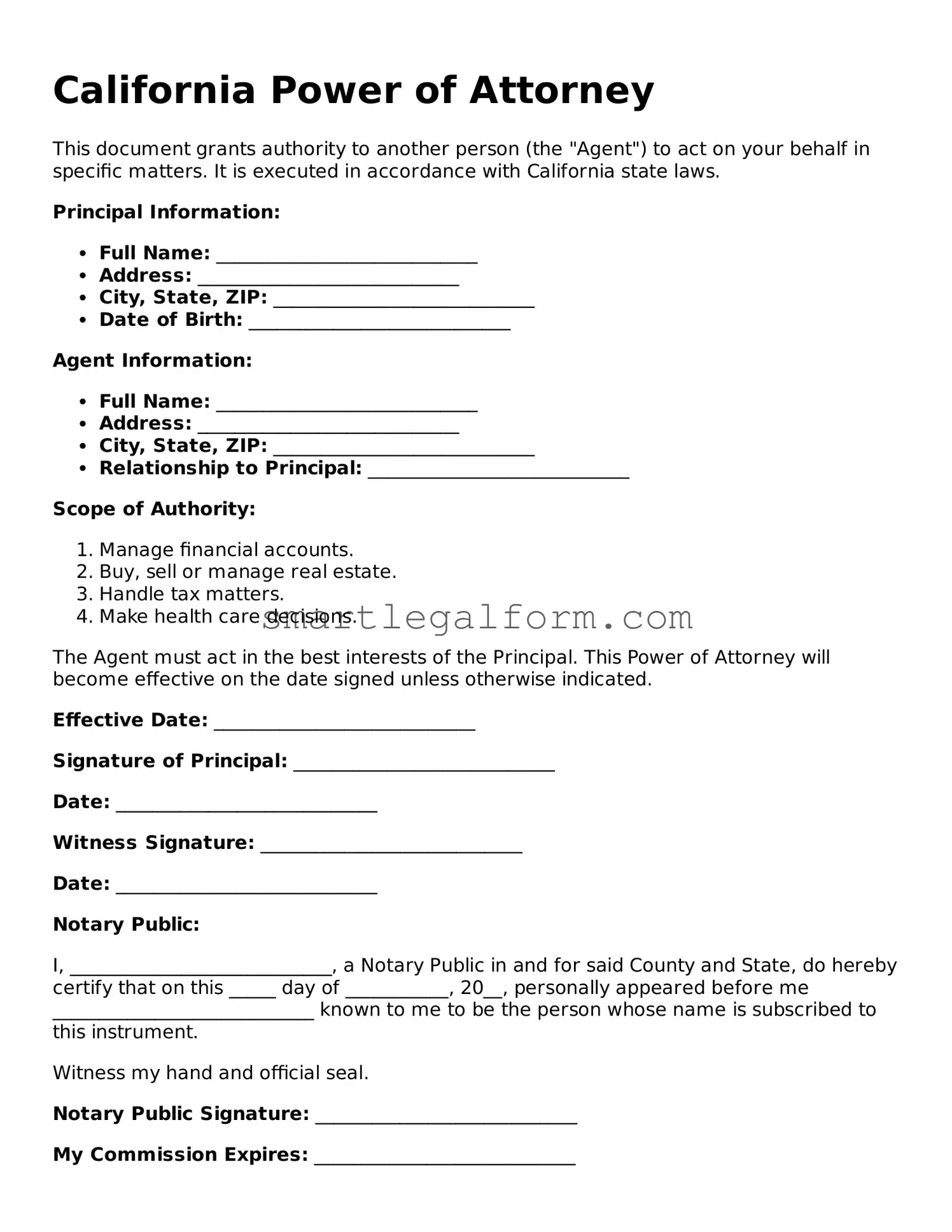Filling out a California Power of Attorney form can be a straightforward process, but many people make common mistakes that can lead to confusion or invalidation of the document. One of the most frequent errors is not specifying the powers granted. It’s essential to clearly outline what decisions your agent can make on your behalf. Vague language can create ambiguity and may lead to disputes down the line.
Another mistake is failing to date the document. A Power of Attorney should always be dated to establish when it becomes effective. Without a date, it may be difficult to determine the validity of the document, especially if there are changes in your circumstances later on.
Many individuals overlook the importance of signatures. Both the principal (the person granting the authority) and the agent (the person receiving the authority) must sign the document. Additionally, having a witness or a notary public can add an extra layer of legitimacy, which is often required for the form to be valid.
People also tend to forget to review the form thoroughly before submitting it. Mistakes in names, addresses, or other critical details can render the document ineffective. Always double-check that all information is accurate and complete to avoid any potential issues.
Another common oversight is neglecting to inform the agent about their responsibilities. After appointing someone as your agent, it’s crucial to discuss the powers you are granting and ensure they understand their role. This conversation can prevent misunderstandings and ensure that your wishes are honored.
Some individuals mistakenly believe that a Power of Attorney is a one-size-fits-all document. In reality, there are different types, such as durable, limited, and springing powers of attorney. Understanding which type best suits your needs is vital for ensuring that your intentions are clear and legally sound.
People often forget to revoke previous Power of Attorney documents. If you have appointed someone in the past and wish to change that, it’s essential to formally revoke the old document. Otherwise, your new Power of Attorney may not be recognized, leading to complications.
Another frequent error is not considering the potential for future incapacity. Some individuals fill out a Power of Attorney without thinking about what will happen if they become unable to make decisions. Planning for this scenario can help ensure that your wishes are respected even when you can’t communicate them.
Lastly, many people underestimate the importance of keeping the document accessible. Once the Power of Attorney is completed and signed, it should be stored in a safe yet accessible location. Informing trusted family members or friends about its whereabouts can help avoid delays in decision-making when it matters most.
Avoiding these common mistakes can make a significant difference in ensuring that your Power of Attorney functions as intended. By taking the time to carefully fill out the form and considering these points, you can create a document that truly reflects your wishes and provides peace of mind.
